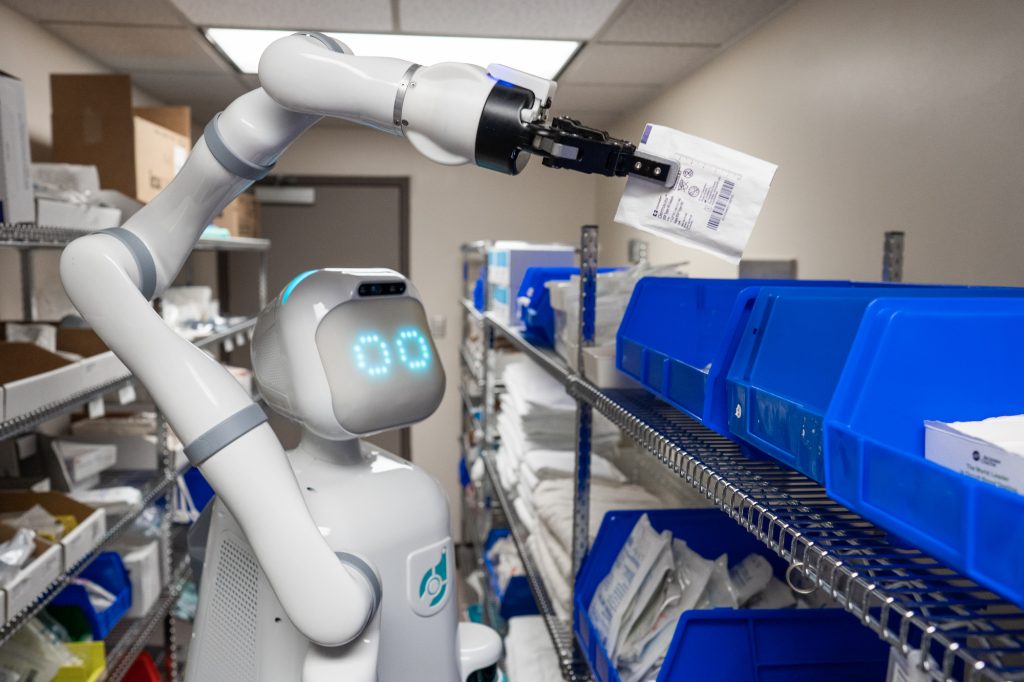In the trying times of SARS-CoV-2 pandemic, some robots have actually turned friends for healthcare workers.
A cylindrical robot rolls into a treatment room to help workers take temperatures and check BP of patients. Another robot that looks like a pair of large fluorescent lights rotated vertically disinfects a hospital with ultraviolet light.
Meanwhile, a cart-like robot brings food to people quarantined in a 16-story hotel. Outside, quadcopter drones ferry samples to labs and watch for lockdown violations.
These are just a few of the two dozen ways robots have been used during the pandemic. Starting from healthcare inside and outside hospitals, to automation of testing and supporting public safety, robots are of immense help.
New robots are being created, including one designed to allow healthcare workers to remotely take blood and swab samples. These prototypes are unlikely to make a difference now. However, the robots under development could make a difference in future disasters if momentum for robotics research continues.
Robots around the world
Roboticists at Texas A&M University and Centre for Robot-Assisted Search and Rescue examined media reports from China and 20 other countries. The study was about how robots are being used during COVID-19 pandemic. The study found that ground and aerial robots are playing a notable role amidst the crisis.
In hospitals, robots are used to interact in real time with patients from a safe distance. Specialised robots are disinfecting rooms and delivering meals or prescriptions. They are also handling the hidden extra work associated with a surge in patients.
Delivery robots are transporting infectious samples to laboratories for testing.
Moreover, public works and public safety departments are using robots to spray disinfectants throughout public spaces. Drones are providing thermal imagery to help identify infected citizens and enforce quarantines and social distancing restrictions. Robots are even rolling through crowds, broadcasting public service messages about the virus and social distancing.
At work and home, robots are assisting in surprising ways.
Realtors are teleoperating robots to show properties from the safety of their own homes. Workers building a new hospital in China were able work through the night because drones carried lighting.
In Japan, students used robots to walk the stage for graduation. In Cyprus, a person used a drone to walk his dog without violating stay-at-home restrictions.
Helping workers, not replacing them
Every disaster is different. But the experience of using robots for COVID-19 presents an opportunity to learn three lessons documented over last 20 years. One important lesson is that during a disaster robots do not replace people.
A majority of robots used in hospitals treating COVID-19 patients have not replaced healthcare professionals. These robots are teleoperated, enabling the healthcare workers to apply their expertise and compassion to sick and isolated patients remotely.
A small number of robots are autonomous like UVD decontamination robots and meal and prescription carts. But the reports indicate that the robots are not displacing workers. Instead, they are helping the existing hospital staff cope with the surge in infectious patients.
The decontamination robots disinfect better and faster than human cleaners. The carts reduce the amount of time and personal protective equipment.
Don’t stockpile robots
The broad use of robots for COVID-19 is a strong indication that the healthcare system needed more robots. But while storing hospital supplies makes sense, storing a cache of specialised robots for use in emergency does not.
This was the strategy of the nuclear power industry, and it failed during the Fukushima Daiichi nuclear accident. Robots stored by Japanese Atomic Energy Agency for an emergency were outdated. Instead, the Tokyo Electric Power Company lost valuable time acquiring and deploying commercial off-the-shelf bomb squad robots.
Commercial robots were not perfect in dealing with a radiological emergency. They were good enough and cheaper for dozens of robots to be used throughout the facility.
Robots in future pandemics
Hopefully, COVID-19 will accelerate the adoption of existing robots and their adaptation to new niches. Laboratory and supply chain automation is emerging as an overlooked opportunity. Automating the slow COVID-19 test processing would eliminate the delays being experienced in US.
If government and industry have learned the lessons from previous disasters, more mundane robots will be ready to work.
Agencies

